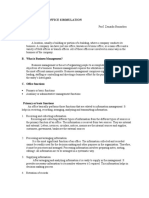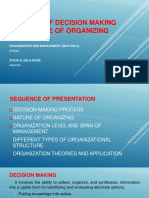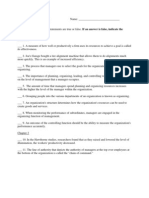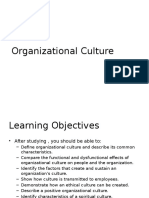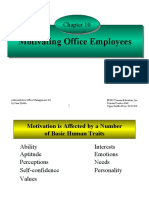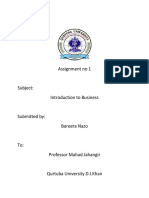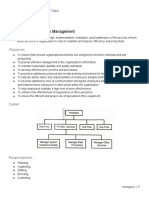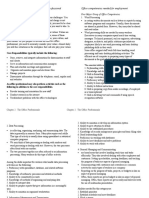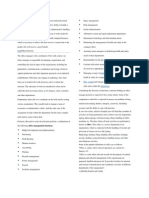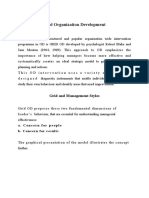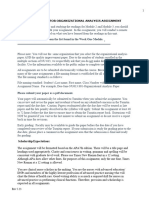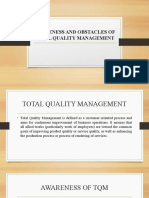Function of Office Management
1. Planning: Planning is concerned with deciding in advance what is to be done. To
plan is to produce a scheme for future action.
Steps in Planning:
1. Establishment of Objectives
2. Establishment of Planning Premises
3. Search for Alternative Course of Action
4. Evaluation of Alternative course of Action
5. Selection of a Course of Action
2. Organising:The function of organising office activities refers to the creation of a
structure of duties and functions of the office personnel to achieve the objectives of the
enterprise.
3. Staffing:Staffing an organisation refers to the selection of men for the various jobs.
Staffing involves selection, recruitment, training, development, promotion and
remuneration of employees.
4. Directing:The process of direction refers to the way an executive issues instructions to
his subordinates and otherwise indicates what it is that should be done.
5. Motivating: Motivation moves a person to action.The most important task of office
management is to motivate employees so that they may direct their efforts towards the
accomplishment of organisational goals.
6. Coordinating: Coordination means balancing and keeping the team together by
ensuring a suitable allocation of tasks to the various members..
7. Controlling:To control is to determine what is being accomplished, that is to evaluate
performance and if necessary, to apply corrective measures so that performance takes
placeaccording to plan, Controlling helps to ensure that what is planned is going to be
accomplised.
To understand the functions of office , first we have to understand that what type of
office or organization it is..whether it is an governmental office or an private
organization.
�If we consider Pakistani office culture. Than in government offices of Pakistan people or
the employees work in very relax conditions where as in private firms people work
efficiently. any how its an different debut let us come back to our today’s topic.
There are two types of functions generally an office do.
1.basic and routine functions.
2.administrative functions.
Firstly we discuss that what are the basic and routine functions of an office do…
Basic Functions
The basic functions of an office primarily related to information. Since the purpose of
office is to provide service of communication and record, the primary functions of an
office are receiving, arranging and giving information. The primary fictions are also
called as the routine functions of an office. These routine functions are analyzed under
the following heading:
(a) Receiving Information
Information collect from within the organisation or from outside the organisation. The
internal sources of information are information received from departments, sections or
divisions of the organisation. The external sources of information are creditors, visitors
and other organisation. Information are received in the form of letters, orders, invoices,
reports and telephone calls.
(b) Recording of Information
Information is recorded so that it can be readily available for reference at the time of
need. Because of this reason, the information received are converted into records which
are kept for future reference. The records normally kept by business houses are
financial accounting records, cost accounting records, orders, progress of work, price
lists and hours worked by employees in the organisation.
(c) Arranging Information
The information collected from different sources are arranged in proper sequence or
order so that they can be readily available and used. The arranged information gives a
better value of the information. The best examples of arranging information are:
preparing invoices, payrolls, reports and statistical statements.
�(d) Giving Information
Office gives information to two sources like internal sources and external sources. The
information need by management may be termed as internal source. The information
needed by management may be of routine or special nature and is supplied either in
written or verbal form. The information supplied to management are orders for
materials, invoices, estimates, statements of account and progress reports.
Administrative Management Functions
Besides primary functions the office performs certain other functions called
administrative management functions. The functions which are meant to attain
operational efficiency or which facilitate the functioning of primary functions are called
administrative management functions. The following are some of the examples of
administrative management functions:
(a) Management Process - For efficient and smooth running of office the following
management processes are to be given due consideration. The process of management
are planning, organizing, staffing, directing, controlling and motivating.
(b) Designing office system and routine - Office devise office system and routine
which indicate a systematic and planned approach to management problem. Office
system denotes a planned approach to the attainment of desired objective.
(c) Designing and controlling forms - Forms serve storehouse of information. As such
the duty of the office is to design the forms and get them printed in such a manner that
it will reduce the cost of operation.
(d) Public Relation Functions - The office maintains cordial relations with the various
segments of the office and the outsiders. By maintaining cordial relationship with
outsiders, it performs public relation functions. The public relation functions are
reception service and liaison services provided by the organisation.
(e) Safeguarding Assets - The function of office is to safeguard various assets of the
enterprise. The office observes the affairs of these assets from the records and warns
management regarding any deficiency. The deficiency in stock record and deficiency in
the account of doubtful debt are reported to management for necessary action.



